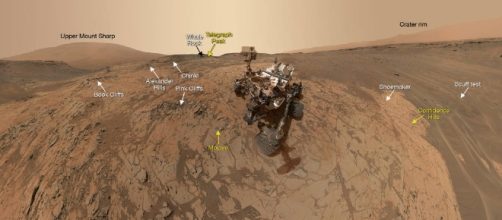As part of its two year mission, NASA's Curiosity rover is leaving Murray Buttes and moving uphill Mount Sharp. After collecting rock samples in this region, curiosity is driving to ridge covered with rock abundant in the iron-oxide mineral hematite and an a bedrock of clay, which are important exploration sites on lower Mount Sharp, where the Mobil laboratory will be researching on the evidence of distant past water rich conditions that may give a clue as to how Mars shows very harsh conditions for the development of microbial life.
Curiosity's Mission
Curiosity rover is studying the habitability on Mars in the ancient past and the possibility for life in the present. The discoveries and studies performed by the rover as it explores higher and younger rock layers has allowed scientists read the passages of Mars' history, revealing details of the red planet´s evolution. It is also paving the way for future explorations on the planet and the first manned mission to Mars.
Drill site 14th
Murray Buttes corresponds to the drilling site number 14th for the rover's mission. This site is located in a geographical rock layer around 180 meters (600 ft.) thick known as the Murray formation. In this layer of rock, curiosity discovered that it consists principally of mudstone, shaped form the accumulated mud of ancient water bodies.
To date, curiosityrover has explored nearly one half of this formation. It is planned that in the next year, curiosity advances on its exploration of the upper half of the Murray formation.
It´s thought that as the rover advances more vertically up Mount Sharp, the record of ancient lakes will continue and the longer expansion for habitability will be revealed.
The next phase of exploration of hematite and clay formation were detected by NASA's Compact Reconnaissance Spectrometer aboard the Reconnaissance Orbiter before the landing of curiosity on Mars. This formations of clay and hematite form in wet environments, therefore, resulted high priorities for Mars' exploration and an advance for science.

